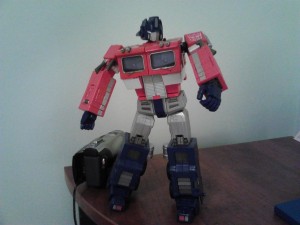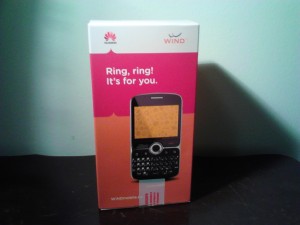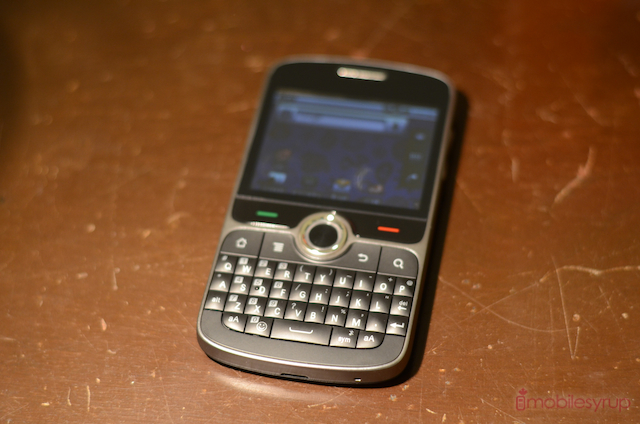
Another day, another inexpensive Android QWERTY device. Last week we took a look at the slightly more expensive Motorola Pro+, and today we have the smaller, slower and significantly cheaper in price Huawei U8350 from WIND Mobile.
The device retails for $135 outright, or for free on the WIND’s Tab+, but either way you slice it the phone, known as affectionately as the “Boulder”, is a far cry from the high-end Android scene. Can the versatile operating system be adapted to run well on a device such as this? Read on to find out.
Specs:
– Android 2.2 Froyo
– 2.6″ 320×240 display, 65k colours
– 528 MHz Qualcomm MSM7225 processor
– 256MB RAM, 512MB ROM
– 3.2MP camera
– WiFi, Bluetooth, GPS
– 115 x 62.8 x 9.9 mm
– 105g
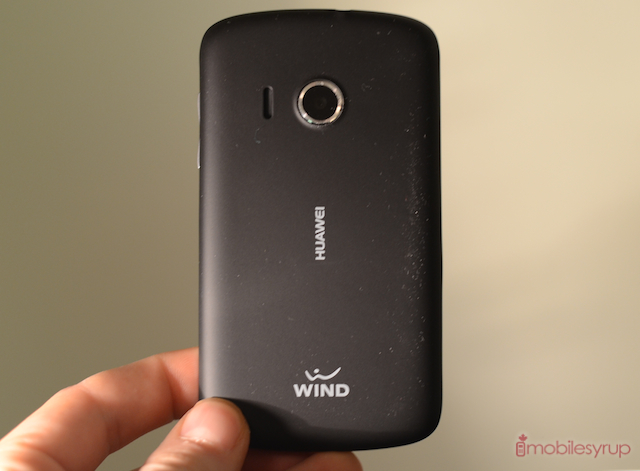
The Phone
We were shocked when we first picked up the Boulder to discover its bezel was actually made of aluminum. With a smooth, uniform finish and high-quality plastic keys, it is a relatively well-made device. The keys don’t rattle, and are sprightly to the touch; the right-side volume rocker feels lively, and for such a small device it possesses an assured weight to it.
The keyboard in many ways surpasses the quality of phones three times the cost: we were able to touch-type on our first try, and each button has a satisfying click. Their rounded shape makes it easy to delineate between keys, and the placement of each is first-rate.
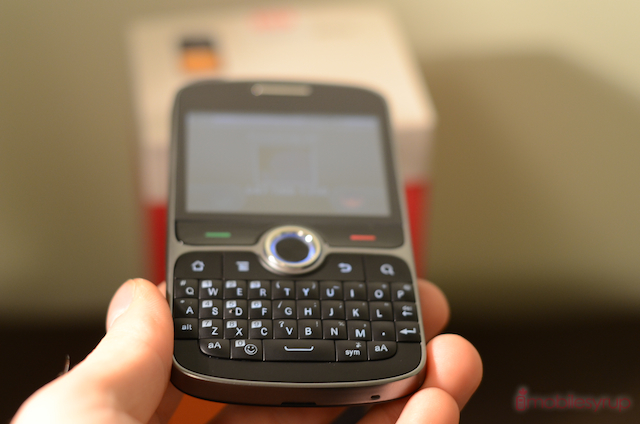
Above the keyboard is the standard Android quartet: Home, Menu, Back and Search, and between them in a four-way directional pad with a selection button in the middle. Each of these is dramatically oversized, but nothing compared to the massive Call and End buttons right underneath the screen. It seems like they padded out the size of each function key because they didn’t want to invest in a bigger screen.
Said screen is exactly what you’d expect from a device that costs $135: grainy, colourless and flat, with narrow viewing angles and extreme fuzziness. Due to the awkward 3:4 aspect ratio (as opposed to 4:3 or 16:9, which is what most Android devices have) the screen is stuck in landscape mode. While other devices such as the HTC Status got away with the same design, their screens were of significantly higher pixel density. As it is the Boulder can barely fit anything on its screen: you’ll barely get through two lines of text on an email before scrolling down.
Responsiveness is pretty bad, too, which is likely why Huawei stuck a four-way directional pad on the front, BlackBerry-style. Though not well used, Android supports analog movement and selection, and it actually comes in handy on this device. The Boulder’s design is appropriate for basic text-based communication. For anything else, we’d recommend going with something more powerful and touch-friendly.
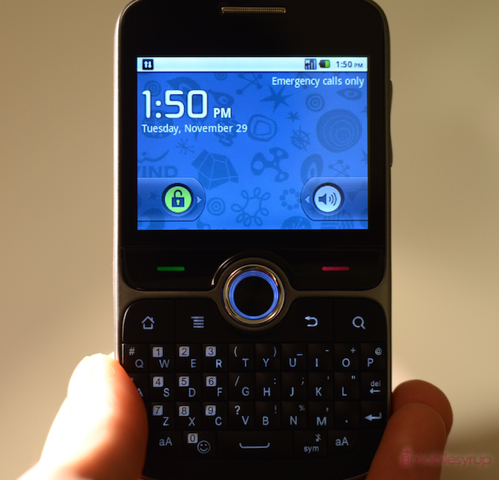
Performance
There isn’t much “performance” to speak of inside this device. With specs akin to the original HTC Dream circa late-2008, the Boulder runs stock Android 2.2 at a pace only a mother could love. It manages to wheeze its way through five home screens and a sparse app drawer, and but for access to the Android Marketplace we’d have sworn this was a feature phone.
It does come with all the stock Android apps that we love, including Gmail, Maps and a browser theoretically capable of rendering full web pages, though we painfully waited for a few to load and decided to stop the torture. One thing we always say about entry-level Android devices, though, is that they’re cheap GPS replacements: the Boulder includes Google’s excellent free turn-by-turn Navigation software, and with WIND’s cheap data plans it’s a pretty good alternative to a dedicated Garmin or TomTom.
We found typing on the device to be easy enough, and the processor was thankfully able to keep up with our presses. By default there is a very intrusive and screen-occupying predictive text bar that appears as you type; it ebbs and flows with the movement of your fingers, constantly repositioning the input box in the process. We’d recommend turning that off and trusting your instincts.
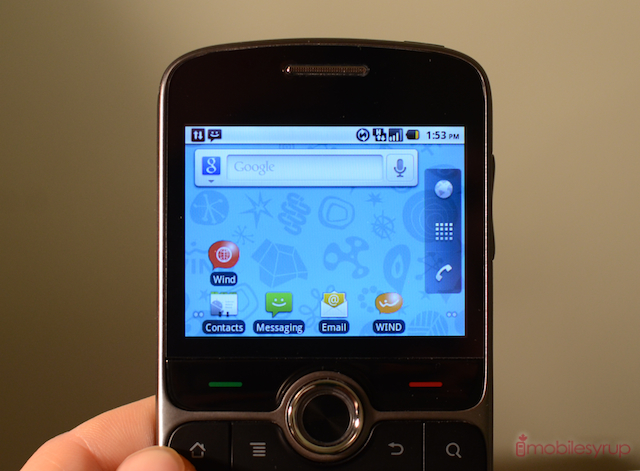
The phone has a useful feature in its ability to assign keyboard keys shortcuts to open various apps. Each letter or, if you’re so inclined, number can be combined with the Search button to effortlessly open the camera, browser or your favourite music player.
Facebook and Twitter, along with an app called Social Streams, are pre-installed if you want to do some socializing, and there is notepad alternative called Richpad for your various riveting thoughts. Social Streams is actually integrated into the Dialer app, appended to the right-most tab, and consolidates both Twitter and Facebook into a single feed. Quite helpful if you’d rather browse than participate.
Many apps don’t run on a device with such a low screen resolution, and the ones that do are so squashed as to be barely usable. Proceed with caution if you’re intending on using the Boulder to satiate your Android app appetite. If you are an app fiend, keep in mind that there is only 150MB of storage on-board.
Another great use for the Boulder would be as a music player. Capable of holding a microSD card up to 32GB music from the headphone jack sounds great. Calls sound fine, too, through the earpiece and the speakerphone is adequately loud for the occasional conference call.
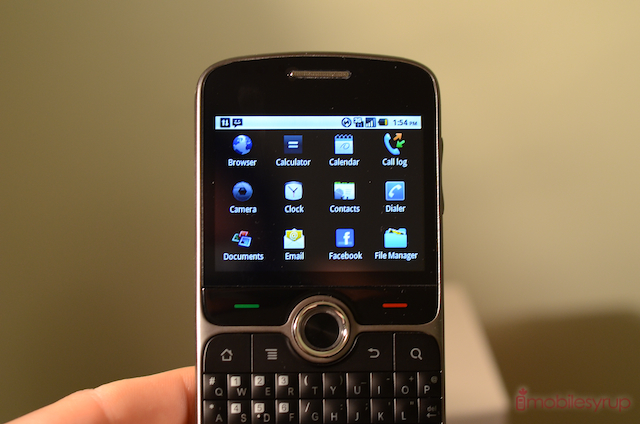
Camera
The 3MP camera on the Boulder comes without a flash, and we found it to be about as poor as we’ve ever seen on a smartphone. Detail is barely perceptible, with most edges blending into the next in spectacular abstract fashion. The Boulder can also capture video at its native resolution.
Battery Life
For such a meagre phone, we’d expect decent battery life from the 1200mAh cell. Unfortunately even that is not the case, as it depleted quicker than any device in recent memory. From being fully charged, we’d have around two to three hours before it died on us. Perhaps we got a lemon, but it was quite unnerving to see the meter drop minute by minute.
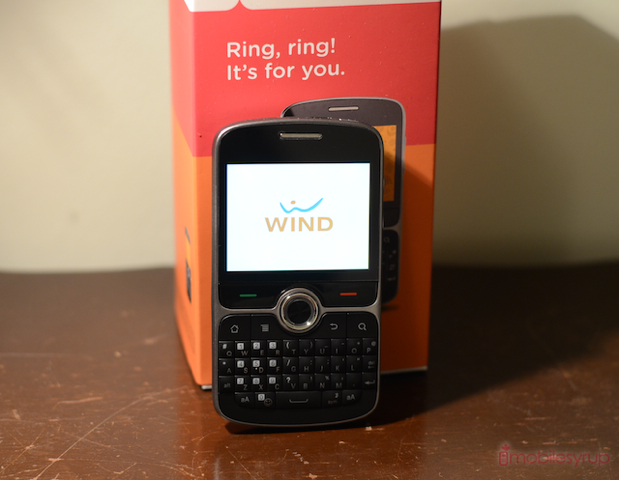
Conclusions
The Huawei U8350 is to a smartphone the way that KFC is to chicken. It’s neither gourmet nor special, but it’s delicious for the price — or perhaps because of the price. It really only fulfils the very basic needs of someone who needs a phone that can text, tweet, email and occasionally browse.
The Huawei U8350 is available from WIND Mobile for $135 outright, or for free on the WindTab+.
Pros:
– Well-built, with metal accents
– Keyboard is springy and well-designed
– It has big buttons
Cons:
– Excruciatingly slow
– Poor screen quality and camera
– Bad battery life
MobileSyrup may earn a commission from purchases made via our links, which helps fund the journalism we provide free on our website. These links do not influence our editorial content. Support us here.

